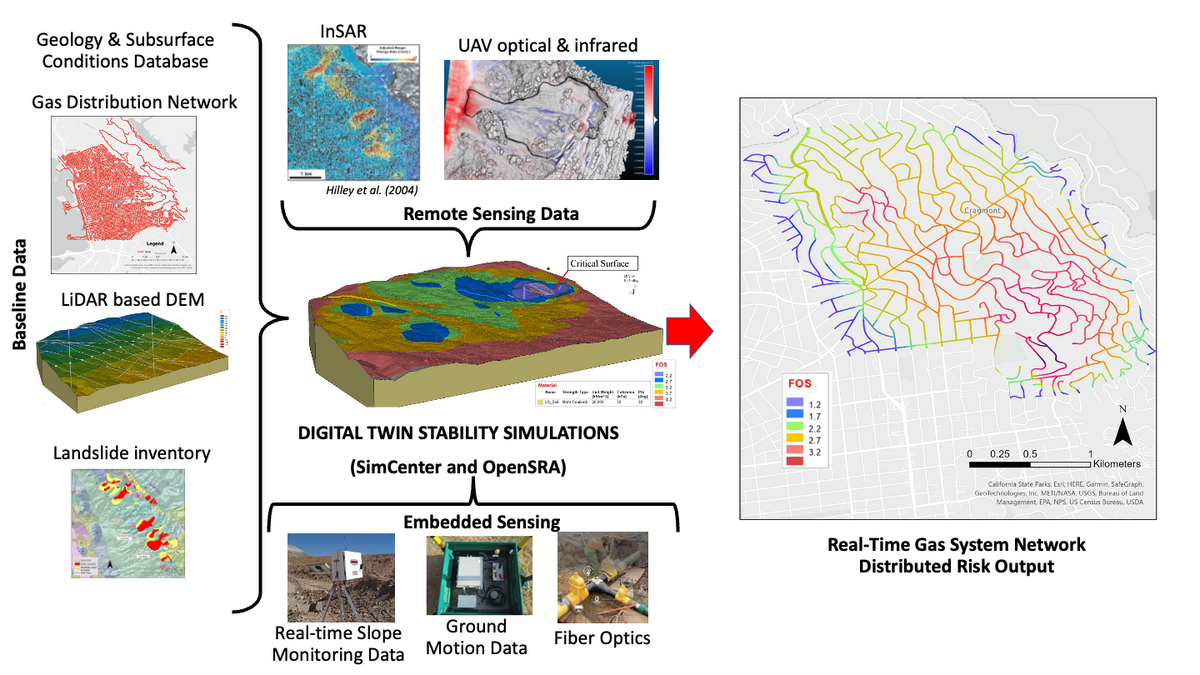
The project “Performance-Based Monitoring and Risk Assessment Tool for Gas Pipelines under Natural Forces,” henceforth referred to as “OpenSRA 2,” is a multi-year study to continue to develop OpenSRA [hyperlink] by furthering research on the latest sensing technologies to inform the analysis performed in the software.
Vision
The University of California, Berkeley (UC Berkeley) in conjunction with Slate Geotechnical Consultants, Lawrence Berkeley National Laboratory (LBNL), NHERI SimCenter, and Dr. Thomas O’Rourke, is conducting a study to test the latest sensing technologies to help inform the performance-based earthquake engineering framework implemented into OpenSRA.
This project will focus on the innovative combination of remote and embedded sensing technologies and data management and analysis. The sensing technologies will be coupled with OpenSRA in predictive modeling and data analytics under certain scenarios. This project’s goal is to identify the technologies that can inform the risk models at the input, intermediate, and final output stages while providing a guide to the state-of-the-art monitoring technologies that natural gas infrastructure owners can understand and implement quickly.
Studies will be performed at two field sites and at one large experimental site. These include a site in the Easy Bay Hills along the Hayward fault, a site in Gilroy on the Calaveras fault, and a large scale test at Blackhawk Geological Hazard Abatement District. Along with these field studies, digital twins will be created to continuously monitor, map ground activity, and perform risk simulations to understand the impact of ongoing processes as well as future ground movement scenarios. The main aim of this project is to evaluate the capabilities and uses of sensing technologies and assess gas companies’ readiness for their uses. The goal is focused on using sensing technologies to assess the current condition and predict the future reliability of gas pipeline infrastructure components and systems using the integrated monitoring and risk assessment tool developed in this project.








